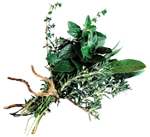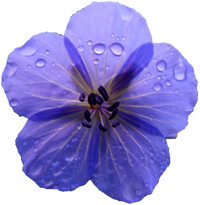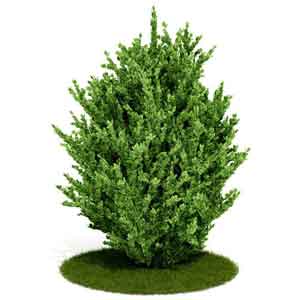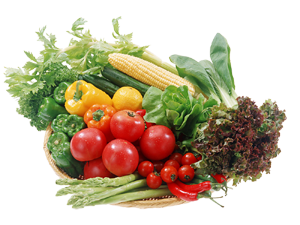Plants:

An annual plant completes its life cycle within one year. They germinate, flower and die in a single season. Some will produce seeds for new plants the following year, but they are not considered a perennial because the original plant dies. A biennial plant is supposed to take two years to bloom, set its seed and die.
Many plants that produce food are annuals. This includes most vegetables and domesticated grains. Carrots, celery and parsley are biennials but are typicaly grown as annual crops for their edible roots, petioles and leaves.
This category includes plants that provide color for just one season. Most annuals fill in quickly and make an attractive display within weeks of planting. Most of these plants will bloom continuously throughout the season.
Some are very fragrant, and many make excellent cut flowers for fresh or dried arrangements.

Our herb chart provides information about various herbs, their hardiness, soil needs, light needs and sizes.
Herbs are plants that serve as a major source of seasonings in the preparation of foods. In an even broader sense, herbs include those plants that are also useful for scents in cosmetics or for medicinal purposes. Many people prefer to grow their own herbs because fresh herbs have more distinctive tastes than some dried herbs.
Finding a location
Most herbs are easy to grow, but you must select the proper location to grow them. Most herbs need a sunny location. The oils, which account for the herbs flavor, are produced in the greatest quantity when plants receive six to eight hours of full sunlight each day. If you don't have a good, sunny location, many herbs will tolerate light shade, but their growth and quality will not be as good.
Herbs will grow in any good garden soil. Most herbs do not require a highly fertile soil. Highly fertile soils tend to produce excessive foliage that is poor in flavor. Herbs grow best when soils have adequate organic matter.
When selecting a site for an herb garden, you must consider drainage. None of the important herbs grow in wet soils, but a few, such as mint, thrive in fairly moist soils. If the only area available is poorly drained, you need to modify the area.
Growing Herbs Inside
You can grow many herbs indoors, but they will be less productive than those grown outdoors. They are best used fresh. They require the same conditions as herbs that are grown outdoors: plenty of sunlight and good, well-drained soil. Select a south or west window. During winter, they need as much light as you can give them. Good drainage is important. Never leave herbs sitting in a saucer of water. Water well, so a little water runs through the pot but does not accumulate. Allow moderate drying, but not wilting, between waterings.
Starting Herbs
You can grow many herbs from seeds. If possible, sow the seeds in pots or flats indoors in late winter. They need a sunny window and cool temperatures (60° F) for best growth. Some herbs do not germinate well, so it is recommended to get a start.
Some established herbs multiply by cutting or division. You can take cuttings of herbs any time during late spring and summer from healthy, well-established plants. Those taken in fall take longer to root.Division is useful for multiplying healthy, established plants that may be two to four years old. Divide herbs in early spring before growth begins. Dig up the old plant and cut or pull it apart into sections. Replant the sections and keep them moist until the new plants are established.
Winter Care
Many herbs suffer winter damage in our climate, so some winter protection for Perennial herbs is advisable. Many herbs have shallow roots that heave out during spring thawing and freezing of soil. A loose mulch spread over the roots about 4 inches deep can provide adequate protection. Don't mulch until after the ground is frozen in early winter. Do not remove mulch until you see signs of new growth in the early spring. If the mulch compacts during the winter from heavy snows, fluff it up in early spring before growth begins.
Harvesting Herbs
Depending on the herb, harvest may include one or more plant parts. In most cases you harvest the leaves, but in some cases you pick flowers or seeds. Handle blossoms just as you would handle leaves. Often, you harvest blossoms with the leaves and mix them together. Dried herbs lose quality in two to three years. Discard them if you haven't used them in that time.
Leaves.
To determine the best harvest time for each herb, you need some experience. However, a few general rules can lead you in the right direction for most herbs:
- Cut stems for harvest when the flower buds are just begining to open. Mints, however, have the most flavor when the spikes are in full bloom.
- When gathering a large quantity of herbs, use an open-weave basket or containers that allow good air movement.
- Never cut more stems than you can conveniently dry at one time.
- You can cut back a Perennial herb to about half its height and can cut down an Annual to a few inches. You can also remove an Annual completely near the end of the season.
- Wash the plants in cool water immediately after gathering and gently pat them dry.
- Dry in a dark, well-ventilated room with low humidity. The temperatures should be between 70 and 90 degrees Fahrenheit.
- For some herbs, strip the leaves from the stems before drying. Herbs in this group include basil, dill, lemon balm, mint, sage, lemon verbena and tarragon. Spread these leaves in single layers for quickest drying.
- Herbs with smaller leaves can be dried on the stems. These herbs include thyme, summer and winter savory, rosemary, oregano and marjoram. Strip the leaves after drying is complete.
- Herb leaves should dry in three to four days under proper conditions.
- Store in airtight jars after complete drying.
Seeds
When the plants begin to mature and yellow, cut the heads of the plants containing the seeds, leaving a short stem. Place them on a drying tray for five or six days. Then the seeds should fall fairly easily from the heads. Remove the chaff, and allow the seeds to continue to dry for another week. Stir them frequently. Store seeds in airtight jars after complete drying.

Perennials generally live for several years, though some may die earlier and others are longer-lived.
No matter what your garden situation, there are a number of perennials available that can adapt to the conditions you already have.
Perennial flowers appear in every color of the rainbow, as well as black, white and brown. Just as important, the range of form and texture among perennials is quite diverse. Low, spreading carpets, medium rounded bushes and tall spires are all available. Texture ranges from fine and feathery to bold and glossy.
One misconception about perennials is that they will somehow take care of themselves. In most cases this is not true.
Here are some general guidelines for maintaining perennials:
- Prune off any dead tops in late winter or early spring.
- Remove dead flowers to encourage repeat blooming.
- Water during drought if possible; early morning is best.
- Clip back scruffy looking plants to promote fresh, attractive growth.
- Control pests and diseases, when noticed, to avoid spreading the problem to other plants.
- Stake Peony, Delphinium, Summer Phlox and other tall plants early to avoid wind damage later.
- Divide perennials when the center of the plant begins to die out with age.

A rose by any other name would smell as sweet. - Romeo and Juliet
Roses are best known as ornamental plants grown for their flowers. They are also used for in perfumes and as a cut flower crop. Roses are often used as landscape plants, for hedging and for other utilitarian purposes such as slope stabilization and game cover. They also have some medicinal uses.
Types of Roses
To keep roses blooming for a longer period of time, be sure to remove the hips, or spent blossoms. Be sure to pinch the stem back to the first branch that has five leaflets.
Hybrid Teas and Grandifloras
Free-branching shrub roses of upright or bushy habit, usually with prickly stems, mid to dark green oval leaves. The large, usually double, often scented flowers are borne on one- and two-year old wood. These roses are borne in flushes from summer to autumn. Good uses are as a hedge or in a formal bed, and for cut flowers. Floribunda
Everblooming, free branching shrub roses of upright or bushy habit, usually with prickly stems and glossy, oval dark green leaves. Small to medium, single to fully double, sometimes scented flowers are often borne in clusters. These roses bloom almost continuously from summer to autumn on shoots from second year and new wood. Use in a border or as hedges. Shrub
A diverse group, including modern hybrids, hybrid musks and English roses. Usually larger than hybrid tea roses, with often prickly stems. Produce leaves with medium to large, oval leaflets. The usually scented, single to fully double flowers are borne in few to many flowered clusters, sometimes singly, from spring to autumn from first and second year wood. Some varieties bloom only in cool weather. Ideal for a border or bed, or as edges; some are also excellent specimen plants. Climbing
Often vigorous, with prickly, arching, stiff stems that climb. Dense, glossy, mid-to dark green foliage. Single to double flowers borne singly and in clusters are from second year wood, some bear on first year growth. Some bloom in spring or early summer only, while others bloom in flushes throughout the summer. Train against a wall or fence, or use to cover garden structures.
Rugosa
Hardy shrub roses. Usually bright green leaves with medium to large, oval leaflets and prickly stems. Most bear single or semi-double, scented flowers in clusters throughout the summer and autumn, on shoots from second-year wood and on new wood. Use as hedges, for a bed or border, or as specimen plants. Miniature
Very compact, sparsely prickly, short stems. The leaves are small, lance shaped. Single to fully double, rarely scented flowers are borne in flushes from summer to autumn on first and second year wood. Ideal for edging paths, or for a raised bed, rock garden or container.
Soil
Good soil is essential for quality rose plants. If the soil is not properly prepared no amount of fertilizing, irrigation, or spraying will yield superior results. Soil not only serves to anchor a rose plant, it provides nutrients to the roots. Therefore, the soil must have a good moisture-holding capacity, yet allow excess water to drain.
To improve a soil that is too sandy or one that is composed of too much clay, the remedy is the same: generous amounts of compost must be added to boost its organic content.
Water
For best performance, roses need watering at all times during the growing season. Inadequate water slows or halts growth and bloom. Water deeply so that the entire root system is moistened. How often to water depends on soil type and weather.
Avoid getting the foliage wet, as this will encourage foliar diseases by keeping the foliage and the atmosphere damp. If you do sprinkle, do it early in the day to be sure foliage dries off by nightfall.
Fertilizer
Regular applications of fertilizer will produce the best results. Give roses their first feeding just as growth begins in the spring and continue until 6 weeks before the earliest normal hard frost.
Dry commercial fertilizer, applied to soil, is most frequently used. Many have a systemic insecticide mixed in that will help to control disease. Follow directions on package for amount and frequency of applications. Liquid fertilizers are useful in smaller gardens utilizing basin watering. Most liquids can also be used as foliage fertilizers - sprayed on rose leaves, which absorb some nutrients immediately.
Disease Control
Roses are susceptible to aphids, leafhoppers, spider mites, powdery mildew, black spot, rust and many others. Therefore, it is important with roses to take preventive measures instead of waiting until you see a problem. A spray program involving the following is advisable:
- Insecticide: Kills harmful insect pests that either chew leaves or suck their juices.
- Miticide: Spider mites are tiny creatures that build fine webbing among foliage and suck a plant’s juices. Ordinary insecticides are usually ineffective in controlling them, so a miticide is needed.
- Fungicide: Helps to prevent fungi, such as powdery mildew, rust, and black spots from living on the plant.
- Regardless of what kind of spray product you choose, ALWAYS read the label carefully before use, since dosages differ and even sprays made from "organic" compounds may be toxic to humans, pets, and fish.
Pruning
Reasons to prune roses:
- To stimulate the production of new canes. The best roses tend to be produced on new canes.
- To eliminate suckers. Suckers originate from below the graft, or union bud.
- To control the plant’s height or shape.
- To remove dead or crowded canes.
- To encourage light penetration and air movement.
Before you start pruning, be sure you know what the pruning requirements of that rose are. Some roses bear their flowers on one-year-wood, or the growth of that year, while others grow on two-year-wood, the growth from last year. These require different pruning styles.
In our area, pruning should begin when the spring thaw begins and before the leaf buds have started to open out. Pruning too early can weaken the plants and might lead to pests, especially bores, causing damage to the canes.
When making cuts to canes it is best to make them on a slant, pointing down from the opposite side of a leaf bud in order to shed water away from the bud. First take out all dead canes, then remove all undersized canes or "whips", canes less than the thickness of a pencil. Next, decide what lateral canes to keep for good shape and which to remove for good air circulation. When cutting, be sure not to cut more than 1 inch above a leaf bud. If the cut is make too high, dieback may occur in the exposed stump. If you cut too close to the leaf bud, a new lateral cane may fail to develop.
| Group | Season | For Maintenance |
|---|---|---|
| Hybrid Tea, Grandiflora | Late winter or early spring. | Cut back main stems to 18-24". Remove weak, spindly shoots. |
| Floribunda, Miniature | Late winter or early spring. | Cut back main stems to 18-24". Remove weak, spindly shoots. |
| Shrub, Rugosa | Late winter or early spring. Summer after flowering | Prune main stems lightly. Cut back 1/2 to 1/3, as necessary |
| Climbing | Late winter or early spring. | First 2 years, rain stems but do not prune. After, prune to shape. |
| Groundcover | Late winter to early spring. | Cut back to outward-facing buds. Shorten sideshoots if overcrowded. |

While it’s easy enough to say that shrubs are perennial plants with woody stems, further definition can be confusing.
Shrubs can block out an undesirable view, mark a property line, or hide a vegetable garden or work area. Shrubs lend height and substance and supplement the color scheme with their own flowers, foliage, or fruits.
Deciduous Shrubs
Deciduous shrubs are woody plants that are mainly known for their flowers and drop their leaves in autumn.
Deciduous shrubs are valued in the landscape for their foliage, branching characteristics, fall leaf color, flowers or colored twigs in winter. There are early spring bloomers, mid- to late spring bloomers, and summer bloomers. It is possible to get a large range of color throughout all the seasons. Colorful fall foliage is another glory of deciduous shrubs.
Selection of deciduous shrubs should be based on their function in the landscape. Shrubs have different habits of growth, fast, medium or slow, with upright, wide-spreading, arching or horizontal branching. The proper selection of the right plant for height and spread at maturity can reduce the need for pruning.
Evergreen Shrubs
An evergreen shrub retains its foliage year-round and are great for year round beauty. These shrubs can be used to create a living snow fence, windbreak, or privacy hedge.
Conifers
These evergreens vary from prostrate to near tree-size. These are especially useful for creating permanent garden structures that look good all year.
Although we expect conifers to have green foliage, they exhibit a surprising range of color, from blackish green through brighter shades of golden green, bright yellow, blue-gray, and purplish bronze. Some change color with the seasons, becoming purple or brown in the winter.
Broad-leaved evergreens
Broad-leaved shrubs are known for their versatility. Some can be trained as hedges or screens while others are noted for their flowers and foliage colors.

Trees act as the walls to your garden. Trees serve to alter the view, visually deleting undesirable elements or framing desirable ones.
Trees also offer defense against wind; by breaking the full force.
Protection from sun is equally important. A tree can help reduce heat buildup inside a home from afternoon sun, resulting in lower air-conditioning bills.
Many trees offer showy or fragrant flowers; foliage of intriguing form and texture; and brilliant or subtle fall coloration. Some trees make a winter show of handsome bark or striking branch structure.
Selecting a shade tree should be done with care. Remember that trees grow at different rates, and make sure it won’t outgrow its intended space or invade its surrounding with a greedy, competitive root system. Decide if full shade, filtered shade or dappled shade is required.
Pruning
Reasons for pruning
- To stimulate shoot growth near cuts.
- To reduce overall size of the tree.
- To make the tree is easier to harvest and spray.
- To improve structural strength.
- To induce branching.
- To increase production and improve fruit.
- To reduce need to prop up branches.
General rules for pruning
- It can be done at planting time to balance roots and tops.
- Prune young trees lightly.
- Prune mature trees heavier.
- Prune the top heavier than the bottom.
- Train young trees early.
- Prune when danger of frost is past.
Fruit production
Different types of tree produce their fruit on different sections of the tree.
- These trees produce only on one-year-old wood:
- Peaches
- Nectarines
- These trees produce only on spurs:
- Apple
- Pears
- These trees produce on any wood:
- Apricots
- Cherries
- Plums
Why to not "Top"
This list provides several reasons why you should not "Top" your trees.
- Starvation: Good pruning practices rarely remove more than 1/4 to 1/3 of the crown, which in turn does not seriously interfere with the ability of a tree’s leafy crown to manufacture food. Topping removes so much of the crown that it upsets an older tree’s well developed crown-to-root ration and temporarily cuts off its food making ability.
- Shock: A tree’s crown is like an umbrella that shields much of the tree from the direct rays of the sun. By suddenly removing this protection, the remaining bark tissue is so exposed that scalding may result. There may also be a dramatic effect on neighboring trees and shrubs. If these thrive in shade and the shade is removed, poor health or death may result.
- Insects and Disease: The large stubs of a topped tree have a difficult time forming callus. The terminal location of these cuts, as well as their large diameter, prevent the tree’s chemically based natural defense system from doing its job. The stubs are highly vulnerable to insect invasion and the spores of decay fungi. If decay is already present in the limb, opening the limb will speed the spread of the disease.
- Weak Limbs: At best, the wood of a new limb that sprouts after a larger limb is truncated is more weakly attached than a limb that is develops more normally. If rot exists or develops at the severed end of the limb, the weight of the sprout makes a bad situation even worse.
- Rapid New Growth: The goal of topping is usually to control the height and spread of a tree. Actually , it has just the opposite effect. The resulting sprouts (often called water sprouts) are far more numerous than normal new growth and they elongate so rapidly that the tree returns to its original height in a very short time—and with a far more dense and dangerous crown.
- Tree Death: Some species of trees are less tolerant to topping than others. Beeches, for example, do not sprout readily after sever pruning and the reduced foliage most surely will lead to death of the trees.
- Ugliness: A topped tree is a disfigured tree. Even with its regrowth it never regains the grace and character of its species. The landscape and the community are robbed of a valuable asset.
- Cost: To a worker with a say, topping a tree is much easier than applying the skill and judgement needed for good pruning. Therefore, topping may cost less in the short run. However, the true costs of topping are hidden. These include: reduced property value, the expense of removal and replacement if the tree dies, the loss of other trees and shrubs if they succumb to changed light conditions, the risk of liability from weakened branches, and increased future maintenance.

Berries
A berry is a small, roundish, juicy fruit that does not have a stone or pit. The fruit has its seeds enclosed in a fleshy pulp. Berries are usually juicy, brightly colored and can be sweet or sour.
Some berry plants grow in a bush form, while others grow as a type of vine. Most berry plants are easy to grow and only some types and varieties need pollinators.
Berries are eaten worldwide and are used in jams, preserves, cakes, pies, beverages, etc.
Home grown berries can be picked when ripe and have a better taste than their store-bought counterparts. Often they are also more economical.

Grapes
A smooth skinned fruit that is borne in clusters. Grapes can be green (usually referred to white), red, purple, black, or pink. Most grapevines are self-fertile and do not need a pollinator.
Grapes are eaten fresh or dried. The juice can be extracted and used as juice and wine or processed into jelly.
Plant the vines in a sunny area that has well-drained soil about 6 to 10 feet apart. Grape vines need some kind of a support to grow on.
Pruning is important. Not only would the vines run rampant without control, but canes only produce fruit once. Prune annually when the vines are dormant, in March or April. This is before the buds start to swell, but when winter damage is apparent. Don't be afraid to remove up to 90 percent of the previous season's growth. This will ensure a higher quality product.

Vegetables are edible plants that cen be eaten raw or cooked and can be used to compliment almost any meal.
The edible portion of a vegetable can be the root, such as beets and carrots, the leaves of lettuce and spinach, the flower buds of broccoli, or the fruit or seeds of certain species, as squash, beans and corn.
Vegetables are an important part of human nutrition. They supply vitamins, minerals and trace elements as well as dietary fiber.
Vegetables are a great first plant for children to grow. Not only can the watch the growth, but they can eat the results of their hard work.
